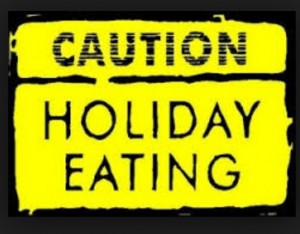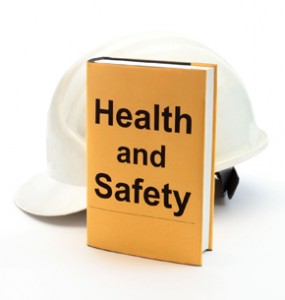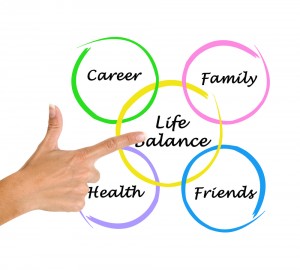 Lifestyle risk factors such as diet and exercise are part of controllable risk factors. Lifestyle risk factors are habits or behaviors people choose to engage in. If changed, they can directly affect some medical risk factors by improving them.
Lifestyle risk factors such as diet and exercise are part of controllable risk factors. Lifestyle risk factors are habits or behaviors people choose to engage in. If changed, they can directly affect some medical risk factors by improving them.
Tag: wellness
Top 10 Holiday Diet Tips of All Time
 1. Trim back the trimmings. Go all out and deck the halls with boughs of holly, glitter, and lights, but when it comes to holiday food, accessorize with care. To shave calories, go easy when adding nuts, cheese, cream sauces, gravy, butter, and whipped cream — additions that don’t add much to the meal, but can add plenty to your waistline. Trim calories wherever you can so you leave the party feeling satisfied, but not stuffed, recommends Carolyn O’Neil, MS, RD, author of The Dish on Eating Healthy and Being Fabulous.
1. Trim back the trimmings. Go all out and deck the halls with boughs of holly, glitter, and lights, but when it comes to holiday food, accessorize with care. To shave calories, go easy when adding nuts, cheese, cream sauces, gravy, butter, and whipped cream — additions that don’t add much to the meal, but can add plenty to your waistline. Trim calories wherever you can so you leave the party feeling satisfied, but not stuffed, recommends Carolyn O’Neil, MS, RD, author of The Dish on Eating Healthy and Being Fabulous.
2. Wear snug clothes and keep one hand busy. When you wear snug-fitting attire, chances are you’ll be too busy holding in your stomach to overeat. While you stand around looking posh in your holiday finery, hold a drink in your dominant hand so it won’t be so easy to grab food, recommends obesity expert Cathy Nonas, MS, RD.
3. Chew gum. When you don’t want to eat, pop a piece of sugarless gum into your mouth. This works well when you’re cooking or when you’re trying not to dive into the buffet, says Nonas.
4. Be a food snob. If you don’t love it, don’t eat it, says American Dietetic Association spokeswoman Melinda Johnson, MS, RD. Scan the buffet for foods you truly treasure and skip the everyday dishes that are available all year long. And don’t think it’s your responsibility to sample everything on the buffet. Go ahead and indulge in your personal holiday favorites, then find a seat and, slowly and mindfully, savor every mouthful.
5. No skipping meals. Always eat normally on the day of a party. “People who skip meals to save up calories tend to overeat everything in sight once they get there,” says Katherine Tallmadge, MA, RD, author of Diet Simple. “Eating sensibly throughout the day will take the edge off the appetite and empower a bit of restraint.” Start with a nourishing breakfast, have a light lunch, then a small snack or salad shortly before the event.
6. Check it out. First things first. When you arrive at the party, grab a sparkling water with a twist, and wait at least 30 minutes before eating. This will give you time to relax, get comfortable in your surroundings, and survey your food choices on the buffet before diving in, says Tallmadge. A buffet is an invitation to eat all you can, and unless you carefully scrutinize it and make wise choices, you’re likely to overeat.
7. Add fun and games. Cynthia Sass, MPH, MA, RD, co-author of Your Diet Is Driving Me Crazy, proposes taking the focus off food and getting family and friends more active during holiday parties. Think horseshoes, badminton, sledding, ice skating, or building snowmen. Indoors, try a spirited game of charades, or rent an instructional dance video followed by a dance-off. “The best parties include dancing, so why not make dancing after eating a new holiday tradition for a great form of fun and recreation?” asks David Katz, MD, MPH, author of The Flavor Point Diet.
8. Alternate alcohol with nonalcoholic beverages. Alcoholic drinks are loaded with calories — especially holiday favorites like eggnog. “Cut your alcohol calories in half by alternating water or seltzer between alcoholic beverages,” Katz advises.
9. Skip the appetizers. “Eschew the appetizers rather than chewing on them,” says Katz. If you need a little nibble before the meal, go for the veggies, fruit, salsa, or a small handful of nuts.
10. Limit the variety. Brian Wansink, PhD, author of Mindless Eating, suggests putting only two items on your plate when you go to the food table. Return as many times as you like, but only take two items each time. “Variety stimulates appetite, and if you limit your choices to just a few items and stick with these, it will be easier to control than eating a little bit of 20 different dishes,” agrees Katz.
Get Moving to Manage Stress
 You know that exercise does your body good, but you’re too busy and stressed to fit it into your routine. Hold on a second — there’s good news when it comes to exercise and stress.
You know that exercise does your body good, but you’re too busy and stressed to fit it into your routine. Hold on a second — there’s good news when it comes to exercise and stress.
Virtually any form of exercise, from aerobics to yoga, can act as a stress reliever. If you’re not an athlete or even if you’re downright out of shape, you can still make a little exercise go a long way toward stress management.
via Exercise and stress: Get moving to manage stress – Mayo Clinic.
How Can Total Worker Health Help My Business or Workplace?
 “Today leading companies have learned that because of lost workdays and diminished employee productivity, poor health costs them more than health benefits do.”
“Today leading companies have learned that because of lost workdays and diminished employee productivity, poor health costs them more than health benefits do.”
Safe and healthy employees are less likely to be injured while on the job and are vibrant, engaged, and high performing.
Safer and Healthier Employees…
… Are good for business and help improve the bottom line. Companies that have exemplary safety, health, and environmental programs outperformed the S&P 500 by between 3% and 5%.
… Create a happier, less stressful, and more prosperous business environment. According to a survey by Aon Hewitt, the National Business Group on Health, and the Futures Company, employees who reported having a strong culture of health at work were more likely to report being happy, less likely to report that stress has a negative impact on their work, and less likely to cite the work environment as an obstacle to health.
… Do better at their jobs and contribute more. Employers that have high employee engagement performed better than employers with low employee engagement in profitability, customer ratings, turnover, safety incidents, productivity, and quality. Engagement includes feeling like someone at work cares about the employee as a person and having the materials needed to do work right.
… Are absent from work less and more productive when at work. For every dollar spent on worksite wellness programs, absentee day costs were reduced by $2.73, and medical costs were reduced by $3.27.9 Research on chronic conditions and productivity estimates that presenteeism causes 18-91 lost work days per year and absenteeism causes 1-10 lost work days per year. Presenteeism costs more than absenteeism and medical expenses combined.
… Enjoy their jobs more, reducing turnover costs. Employees who feel supported by their employers are more likely to want to keep their jobs and will help attract and retain the best employees for the business. A study by the World Economic Forum found that 64% of employees who reported that their workplaces were active promoters of health intended to stay with their companies at least five years.
via CDC – Making the Business Case – NIOSH Total Worker Health.
How to Have a Stress Free Holiday Season
 The holidays are officially here and the season for giving begins. It’s a wonderful time of year, but with all the activities, excitement and family obligations taking place at once, it’s easy to feel overwhelmed, stressed and even a tad bit gloomy. Here are 8 simple steps to relax, let go and really enjoy a truly happy holiday!
The holidays are officially here and the season for giving begins. It’s a wonderful time of year, but with all the activities, excitement and family obligations taking place at once, it’s easy to feel overwhelmed, stressed and even a tad bit gloomy. Here are 8 simple steps to relax, let go and really enjoy a truly happy holiday!
- Focus on your connections. This holiday, reflect on the meaning and closeness of your relationships. It’s not the amount of money you spend, but how much love and joy you share that will create the quality of the season. The beautifully wrapped presents and bows are far less important than the people in your life.
- Entertaining? Make a time line and list. Being organized and prepared will save you from a lot of stress hormones. Prioritize and delegate tasks when you can. Enlist the help of professionals if need be (cleaning? catering?).
- Keep it simple. The food doesn’t have to be fancy and you don’t have to spend a small fortune on decorations. A fire in the fireplace can set the mood and fresh flowers or greens are beautiful anywhere in the house. The people make the party.
- Involve the whole family in your holiday planning and preparation. Children love to be a part of the process. Let them help with frosting cookies, making place cards, decorating your home or holiday table. Let go of perfection and have fun!
- Get plenty of sleep and eat healthy foods. Sleep may seem like an indulgence this time of year, but it is essential to good health and a positive holiday outlook. Rest, slow-down and take time to reflect. There will be plenty of treats and sweets – eat healthy meals to counteract the unhealthy choices.
- Let go and go with the flow. If you’re overwhelmed, imagine what would happen if you didn’t do “it”. What is the worst case scenario? Not sending your holiday cards on time probably won’t matter in the long run.
- Give out of joy vs. obligation. Don’t stress your budget. Be creative and come from your heart. It makes the gift much more meaningful.
- Perform a small act of kindness without expecting anything in return. A smile will spread some holiday cheer.
via How to Have a Stress Free Holiday Season: 8 Steps (with Pictures).
Combining Safety & Wellness = Total Worker Health
 Today, emerging evidence recognizes that both work-related factors and health factors beyond the workplace jointly contribute to many safety and health problems that confront today’s workers and their families. Traditionally, workplace safety and health programs have been compartmentalized. Health protection programs have focused squarely on safety, reducing worker exposures to risk factors arising in the work environment itself. And most workplace health promotion programs have focused exclusively on lifestyle factors off-the-job that place workers at risk. A growing body of science supports the effectiveness of combining these efforts through workplace interventions that integrate health protection and health promotion programs.
Today, emerging evidence recognizes that both work-related factors and health factors beyond the workplace jointly contribute to many safety and health problems that confront today’s workers and their families. Traditionally, workplace safety and health programs have been compartmentalized. Health protection programs have focused squarely on safety, reducing worker exposures to risk factors arising in the work environment itself. And most workplace health promotion programs have focused exclusively on lifestyle factors off-the-job that place workers at risk. A growing body of science supports the effectiveness of combining these efforts through workplace interventions that integrate health protection and health promotion programs.
Effects of Uncontrolled Stress at Work
 Unfortunately, work-related stress doesn’t just disappear when you head home for the day. When stress persists, it can take a toll on your health and well-being.
Unfortunately, work-related stress doesn’t just disappear when you head home for the day. When stress persists, it can take a toll on your health and well-being.
In the short term, a stressful work environment can contribute to problems such as headache, stomachache, sleep disturbances, short temper and difficulty concentrating. Chronic stress can result in anxiety, insomnia, high blood pressure and a weakened immune system. It can also contribute to health conditions such as depression, obesity and heart disease. Compounding the problem, people who experience excessive stress often deal with it in unhealthy ways such as overeating, eating unhealthy foods, smoking cigarettes or abusing drugs and alcohol.
Strike a Better Work-life Balance
 As long as you’re working, juggling the demands of career and personal life will probably be an ongoing challenge. Consider these ideas to find the work-life balance that’s best for you:
As long as you’re working, juggling the demands of career and personal life will probably be an ongoing challenge. Consider these ideas to find the work-life balance that’s best for you:
- Track your time. Pay attention to your daily tasks, including work-related and personal activities. Decide what’s necessary and what satisfies you the most. Cut or delegate activities you don’t enjoy or can’t handle — or share your concerns and possible solutions with your employer or others.
- Take advantage of your options. Ask your employer about flex hours, a compressed workweek, job sharing, telecommuting or other scheduling flexibility. The more control you have over your hours, the less stressed you’re likely to be.
- Learn to say no. Whether it’s a co-worker asking you to spearhead an extra project or your child’s teacher asking you to organize a class party, remember that it’s OK to respectfully say no. When you quit accepting tasks out of guilt or a false sense of obligation, you’ll have more time for the activities that are meaningful to you.
- Leave work at work. With the technology to connect to anyone at any time from virtually anywhere, there might be no boundary between work and home — unless you create it. Make a conscious decision to separate work time from personal time. When you’re with your family, for instance, keep your laptop in your briefcase.
- Manage your time. Organize household tasks efficiently, such as running errands in batches or doing a load of laundry every day, rather than saving it all for your day off. Put family events on a weekly family calendar and keep a daily to-do list. Do what needs to be done and let the rest go.
- Bolster your support system. At work, join forces with co-workers who can cover for you — and vice versa — when family conflicts arise. At home, enlist trusted friends and loved ones to pitch in with child care or household responsibilities when you need to work overtime or travel.
- Nurture yourself. Eat a healthy diet, include physical activity in your daily routine and get enough sleep. Set aside time each day for an activity that you enjoy, such as practicing yoga or reading. Better yet, discover activities you can do with your partner, family or friends — such as hiking, dancing or taking cooking classes.
via Work-life balance: Tips to reclaim control – Mayo Clinic.
Healthy Michigan
 The Michigan 4 x 4 Tool incorporates four key healthy behaviors with four key health measures. If each of us practice the Michigan 4 x 4 Plan, we will improve our quality of life and reduce health costs.
The Michigan 4 x 4 Tool incorporates four key healthy behaviors with four key health measures. If each of us practice the Michigan 4 x 4 Plan, we will improve our quality of life and reduce health costs.
Each of us can improve our personal health by:
Practicing four key healthy behaviors:
- maintain a healthy diet
- engage in regular exercise
- get an annual physical examination
- avoid all tobacco use
Being aware of four key health measures that are closely tied to several chronic diseases:
- body mass index (BMI)
- blood pressure
- cholesterol level
- and blood sugar (glucose) level
50 Common Signs and Symptoms of Stress
 1. Frequent headaches, jaw clenching or pain
1. Frequent headaches, jaw clenching or pain
2. Gritting, grinding teeth
3. Stuttering or stammering
4. Tremors, trembling of lips, hands
5. Neck ache, back pain, muscle spasms
6. Light headedness, faintness, dizziness
7. Ringing, buzzing or “popping sounds
8. Frequent blushing, sweating
9. Cold or sweaty hands, feet
10. Dry mouth, problems swallowing
11. Frequent colds, infections, herpes sores
12. Rashes, itching, hives, “goose bumps”
13. Unexplained or frequent “allergy” attacks
14. Heartburn, stomach pain, nausea
15. Excess belching, flatulence
16. Constipation, diarrhea, loss of control
17. Difficulty breathing, frequent sighing
18. Sudden attacks of life threatening panic
19. Chest pain, palpitations, rapid pulse
20. Frequent urination
21. Diminished sexual desire or performance
22. Excess anxiety, worry, guilt, nervousness
23. Increased anger, frustration, hostility
24. Depression, frequent or wild mood swings
25. Increased or decreased appetite
26. Insomnia, nightmares, disturbing dreams
27. Difficulty concentrating, racing thoughts
28. Trouble learning new information
29. Forgetfulness, disorganization, confusion
30. Difficulty in making decisions
31. Feeling overloaded or overwhelmed
32. Frequent crying spells or suicidal thoughts
33. Feelings of loneliness or worthlessness
34. Little interest in appearance, punctuality
35. Nervous habits, fidgeting, feet tapping
36. Increased frustration, irritability, edginess
37. Overreaction to petty annoyances
38. Increased number of minor accidents
39. Obsessive or compulsive behavior
40. Reduced work efficiency or productivity
41. Lies or excuses to cover up poor work
42. Rapid or mumbled speech
43. Excessive defensiveness or suspiciousness
44. Problems in communication, sharing
45. Social withdrawal and isolation
46. Constant tiredness, weakness, fatigue
47. Frequent use of over-the-counter drugs
48. Weight gain or loss without diet
49. Increased smoking, alcohol or drug use
50. Excessive gambling or impulse buying
via Commons Signs and Sympotons of Stress | The American Institute of Stress.
